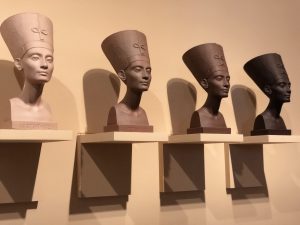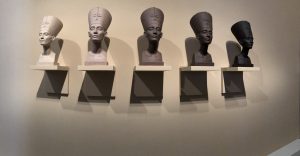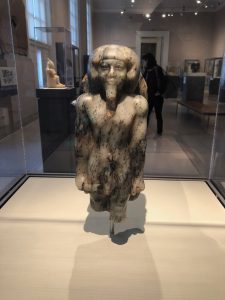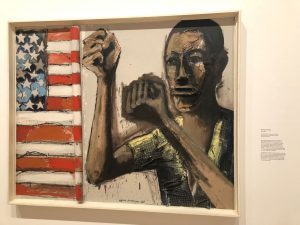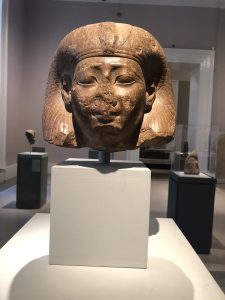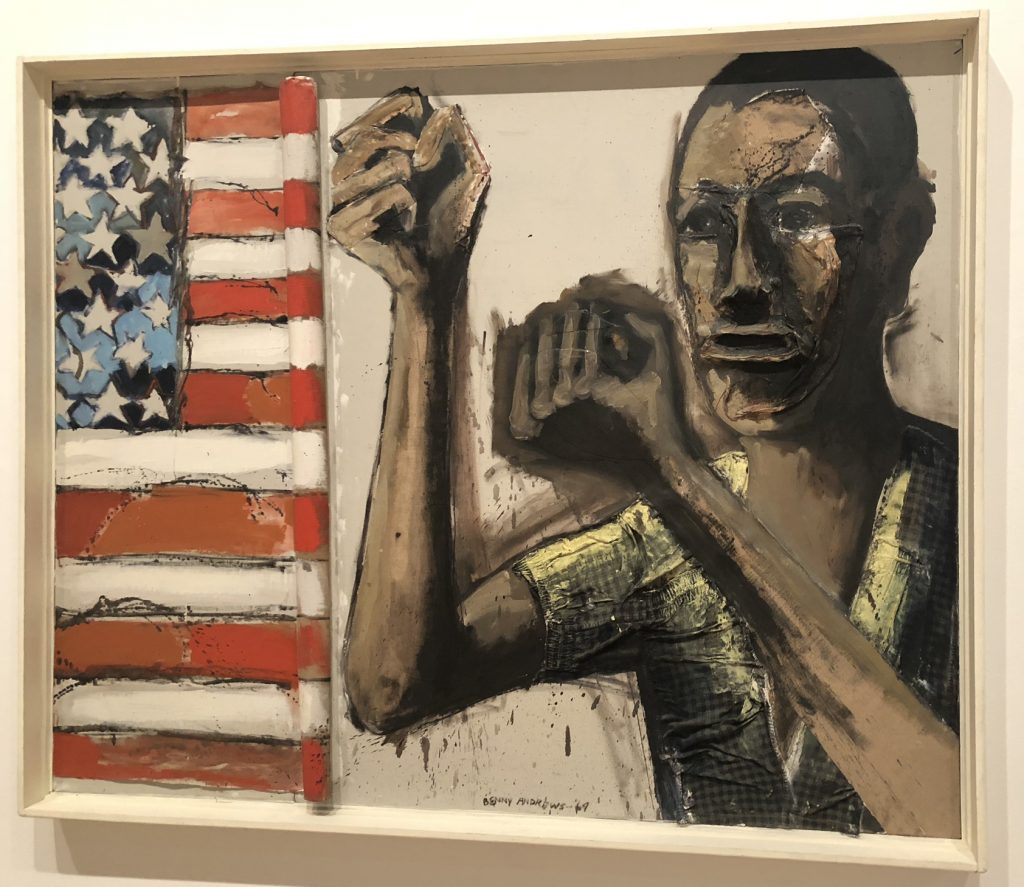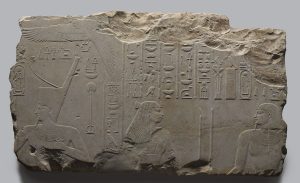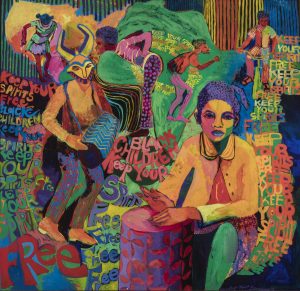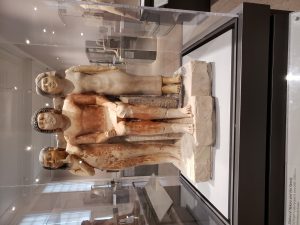The entire Egyptian exhibition was really beautiful, it consisted of a lot of sculptures and models of Egyptian life and objects. The artwork that captured my eye immediately in the midst of all the others was, the Statue of Queen Ankhnes-meryre II and Her Son, Pepy II (author Unknown). The Sculpture is of a Queen (Ankhnes) holding her son, Pepy II. Immediately the size of both is noticeable as Queen Ankhnes is at least three times the size of Pepy II. Pepy II is on Ankhnes’ lap and facing East, as Ankhnes is facing North. The size could be a symbol of how powerful the mother-role was as she would serve as not only the domestic role but also as a protector of the future generations of Kings/Queens. Her role as a protector can be observed as Pepy II “clasps” her hand, clasping being a sign of reassurance and presence of one and their protection. Pepy II’s feet also are on a block almost half the size of his mother, this could further represent his King stature and how he will always be on some sort of pedestal in relation to the other Egyptians. The direction in which they’re facing can symbolize how they own have their own focuses or visions- the Queen ensuring that she’s fulfilling her role as a mother to nurse her child and still “act as regent” and Pepy II, facing his own direction can symbolize his priorities or focus of being “king as a small child”. The fact that he was king so young can also be another reason as for why he is so small in comparison to his mother, since he is not yet very powerful. It is made out of Egyptian alabaster which has a yellowish-brown town. Alabaster is very easy for drawing and carving. The neutrality in color could show that maybe there was no large gap in importance nor dominance between the two at that specific time- in Egypt Red usually symbolized Males and their dominance, and Yellow was normally used for Women. Or the lack of color can simply show us that there may have been a lack of color resources for art when this was made.

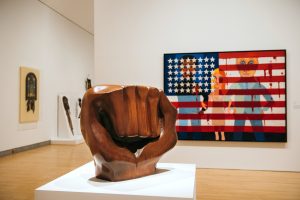
In Soul of a Nation there were very colorful paintings, some very colorful some abstract, some very simplistic, but all with a very powerful message. The artwork that seized my attention was the mahogany sculpture, “Black Unity” by Elizabeth Catlett. The sculpture is very large and is simply a sculpted closed fist, which has been established for unity- especially Black unity. The size of the sculpture is very big, which could represent a unity in activism for Black rights as many have come together to stand up for and reclaim their rights, especially in the last 50 or so, years. The use of making the fist Mahogany, a very deep brown, can be a literal representation of a Black hand. The sculpture is placed on top of a white square base, which could be used for contrast- to make the fist stand out greatly amongst everything else, almost as negative space- or simply for positioning, to re-imagine a world where Blacks are no longer subjected nor inferior to whites. The significance of this fist can extend largely, as it can be intended for an audience of whites as well, and make them feel powerless or serve as a reminder to make them remotely aware of racial injustices that have occured. When I was at the exhibit, I witnessed a lot of people, but a majority were white or tourists. Making this sculpture so big and noticeable, even the placement of it being in the middle of the floor with all the other artwork surrounding it can be a stamp or symbol for Black power and make everyone, especially the white people aware, as it is something you can’t miss nor ignore.



